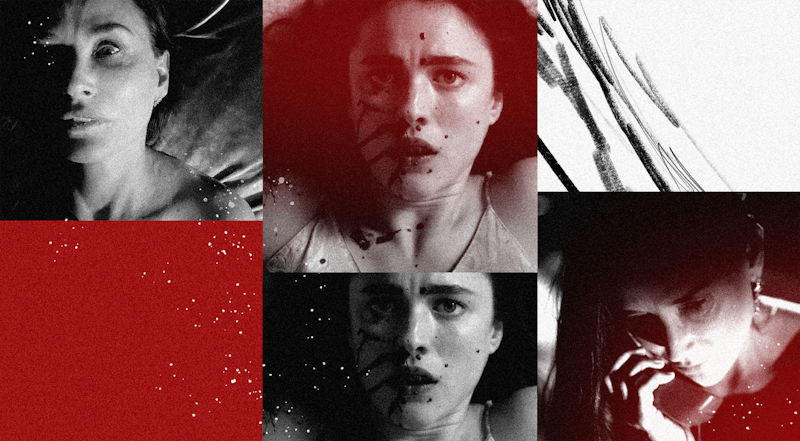Everyone is familiar with the experience of repeating a word with such frequency that it loses all meaning. Where before it had fluidly and unreflectively slipped into our speech, saying it again and again has made it sit uneasily on the tongue, made it strange. It is this experience—of repetition rendering something unfamiliar, and thus creating something new—which perpetually unfolds at the exhibition Begin Again: Repetition in Contemporary Art.
Throughout the gallery, we are overwhelmed by the meticulous, rhythmic percussion of clapping hands. This ever–recurring beat soon ceases to shock and becomes background static. It issues, we eventually discover, from a circle of boxy television screens, which play recordings of the Armenians rendered unemployed in the wake of the collapse of the Armenian Soviet Socialist Republic. In this rhythm, in the way that each pair of hands are clasped between claps, in this concretion of desperate, despairing boredom and tedium, we find that there is repetition not only in actions but in stillness, monotony not only in the production line but also in its absence.
Another piece, Great Transformation, the Object—After Naum Gabo’s “Construction in Space, Two Cones” of 1927/37, appears, at first, to lie in shattered pieces. However, under closer inspection, we become aware that the artist, Marianne Vierø, has in fact created meticulous, deliberate recreation of the exact manner in which Naum Gabo’s original sculpture disintegrated when it was removed from its glass case half a century ago. This confluence between the end of one work and the beginning of another seems to problematise the very dichotomy of destruction and creation, which appear to be folded together in such an act of repetition.
In Silent Mountain, one of Bill Viola’s distinctive oeuvre of slow–motion video installations, we silently watch two figures on separate screens dragging themselves through motions of anguish on a loop of eight minutes and 18 seconds. Viola describes the silent piece as “probably the loudest scream I have ever recorded.” Each figure mirrors the other’s extended despair but their expressions diverge even as they become more intense—the woman on the left seems to crumple inward, while the man on the right bursts outward in an eruption of pain. We are confronted with different manifestations of the same, repeated suffering, with bodies flailing in familiar, recurrent nervous ticks and gestures.
Trauma is repetition. It is the reliving of the same moments until they are engraved into one’s nervous system, until one forms rituals to usher them away like one is clearing some curse. Eventually, they lose all relation to the original pain that they once recorded like a scar, and become no more than senseless mental furniture, benign tumors of the mind. As Viola’s piece loops, the bodily manifestation of mental agony we witness becomes ever more detached from any particular cause or circumstance, and we are perhaps confronted with the idea that suffering, which always appears unique to the sufferer, is really reproducible.
In what feels like the collection’s climax, Fransisco Tropa’s Lantern projects the shadow of an hourglass onto the wall, with the mechanism turning the hourglass every three minutes to create unbroken continuity. It's reminiscent of Nietzsche’s challenge, in The Gay Science, to reflect upon our lives in the context of their eternal return—he imagines a demon who asks us to reflect on how we would live if “the eternal hourglass of existence is turned over again and again, and you with it, speck of dust.”
The image created by Tropa’s piece is inverted, such that the sand on the wall seems to surge upward, instead of falling with gravity. In this, I felt there was some answer to Nietzsche’s question, a representation of the possibility of existing in such a way as to at once defy and embrace the weight of repetition. To my eyes, it came to embody the reply that Nietzsche suggests that we might be able to give to the demon, if we have lived even one “tremendous moment” of ecstasy and understanding that could justify eternal repetition: “You are a god, and never have I heard anything more divine.”
If the disparate artists and works brought together by this curation have a thesis in common, it is that repetition is never just the return of the same, but always also the mother of difference. In repeating our past mistakes, in the hauntings of memory, in counting the days until some awaited salvation, in the unity of chants, in the meticulous reproduction of something once spontaneous, in the monotonous recurrence of systematic violence, in the performance of a script, in death and in birth, in seemingly every motion and action, we are led to the conclusion that we are beings of repetition, and that it is within this repetition that we form the idea of change.
‘Begin Again: Repetition in Contemporary Art’ is on display at the Philadelphia Museum of Art until Dec. 30.






